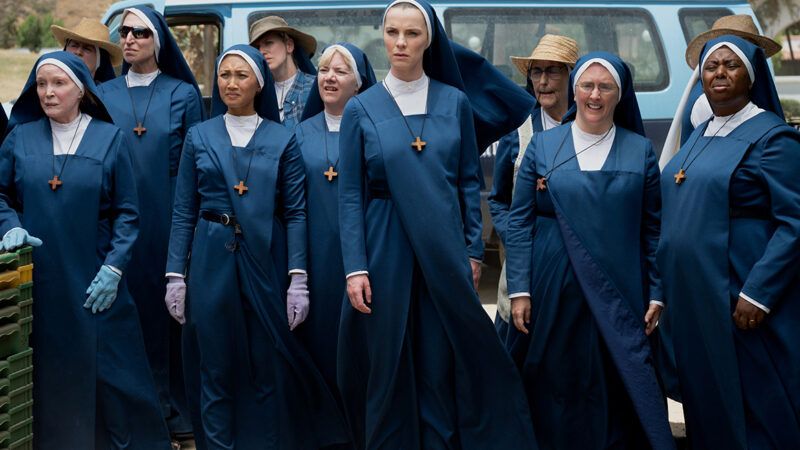Review: Mrs. Davis Tests the Limits of Science and Faith
When does a sufficiently advanced algorithm start to mimic our conception of God?


When Sister Simone (Betty Gilpin) loses her convent, she vows revenge against the entity responsible: a powerful AI known as Mrs. Davis, which guides most people's daily lives by doling out rewards for those who make good choices via a smartphone app. This delightfully weird premise animates the Peacock series Mrs. Davis, co-created by Damon Lindelof, best known for his work on Lost, the puzzle-box drama from the 2000s.
When confronted, Mrs. Davis offers Simone a deal. If the nun can complete a quest to find the Holy Grail—algorithms love clichés, after all—Mrs. Davis promises to shut herself down. The show unspools into a madcap adventure involving a Vatican conspiracy, a guy named Arthur Schrödinger (yes, he has a cat), a Super Bowl ad for sneakers, and a metaphysical falafel shop run by Simone's husband. Mrs. Davis manages to be unique despite having a plot constructed almost entirely of storytelling tropes that are, in some cases, thousands of years old.
And in some cases, just a couple of decades old. Mrs. Davis winks at Lindelof's Lost past—in just the first episode, someone is rescued from a deserted island, a secret hatch is discovered, and two characters debate whether they should push a button that may or may not cause dire consequences. As in Lost, Lindelof piles on layers of symbolism, then forces his characters (and audience) to figure out the difference between a sincere religious experience, a red herring, and a trap. Mrs. Davis tests the limits of science and faith, while once again intertwining coincidence and fate.
If any sufficiently advanced technology is indistinguishable from magic, the show asks, then is any sufficiently advanced algorithm inevitably going to mirror humanity's conception of God?
This article originally appeared in print under the headline "Mrs. Davis."
Show Comments (14)